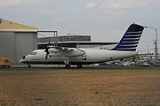
LADS
Encyclopedia

The lack of progress made in surveying Australia's territorial waters, most of which was unsurveyed or relying on Age of Sail
Age of Sail
The Age of Sail was the period in which international trade and naval warfare were dominated by sailing ships, lasting from the 16th to the mid 19th century...
-era charts
Nautical chart
A nautical chart is a graphic representation of a maritime area and adjacent coastal regions. Depending on the scale of the chart, it may show depths of water and heights of land , natural features of the seabed, details of the coastline, navigational hazards, locations of natural and man-made aids...
prompted the Royal Australian Navy
Royal Australian Navy
The Royal Australian Navy is the naval branch of the Australian Defence Force. Following the Federation of Australia in 1901, the ships and resources of the separate colonial navies were integrated into a national force: the Commonwealth Naval Forces...
to seek a method of effectively surveying large areas from the air in the 1970s. The Defence Science and Technology Organisation
Defence Science and Technology Organisation
The Defence Science and Technology Organisation is a branch of the Australian Department of Defence which researches and develops technologies for use in the Australian defence industry....
developed the LADS system, with feasibility trials beginning 1977.
The LADS system is built around a Nd:YAG laser
Nd:YAG laser
Nd:YAG is a crystal that is used as a lasing medium for solid-state lasers. The dopant, triply ionized neodymium, typically replaces yttrium in the crystal structure of the yttrium aluminium garnet , since they are of similar size...
, which emits an infra-red beam at 990 hertz
Hertz
The hertz is the SI unit of frequency defined as the number of cycles per second of a periodic phenomenon. One of its most common uses is the description of the sine wave, particularly those used in radio and audio applications....
. The beam is frequency doubled to produce a green laser. This is split into two beams, one infra-red, one green, by an optical coupler, with the infra-red beam aimed directly below the aircraft, and the green beam directed across the target area with a scanning mirror. The infra-red laser does not penetrate the water's surface, and its reflected pulse indicates the height of the aircraft above the surface. The green laser penetrates to the ocean floor. The return pulse from the green laser indicates the height of the aircraft from the ocean floor, and the difference between the two values is used to calculate the water's depth. The data from the lasers is not processed aboard the aircraft, but instead by a ground support team, with aircraft flight data and global positioning system
Global Positioning System
The Global Positioning System is a space-based global navigation satellite system that provides location and time information in all weather, anywhere on or near the Earth, where there is an unobstructed line of sight to four or more GPS satellites...
information used to help generate hydrographic readings. The aircraft makes multiple, overlapping passes of the target area to ensure accurate data is collected. The LADS system is capable of taking 990 soundings
Depth Sounding
Depth sounding refers to a historical nautical term for measuring depth; it is often referred to simply as sounding. Sounding is finding the depth of a given point in a body of water. Sounding data is used in bathymetry to make maps of the floor of a body of water. Soundings were traditionally...
per second, with data points positioned 2 to 6 m (6.6 to 19.7 ) apart across a swath up to 288 metres (944.9 ft) wide. The system is capable of working with waters up to 70 metres (229.7 ft) deep, and can be modified to perform land surveys of areas with an altitude variance less than 50 metres (164 ft)
LADS entered service with the AHS in 1993. The equipment was initially fitted to a Fokker F27
Fokker F27
The Fokker F27 Friendship is a turboprop airliner designed and built by the Dutch aircraft manufacturer Fokker.-Design and development:Design of the Fokker F27 started in the 1950s as a replacement to the successful Douglas DC-3 airliner...
aircraft. In 2010, the system was installed in a De Havilland Dash 8 aircraft.

